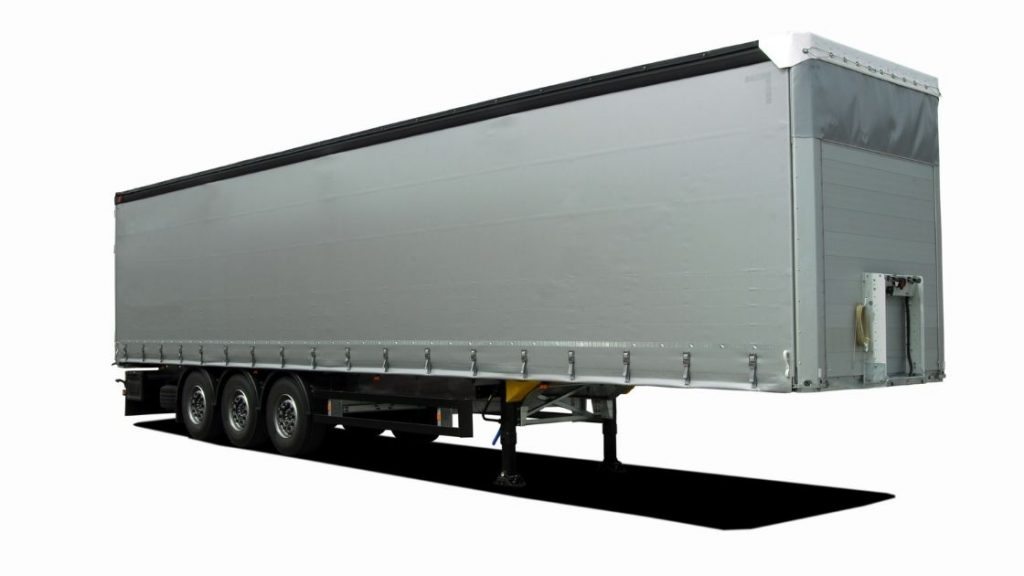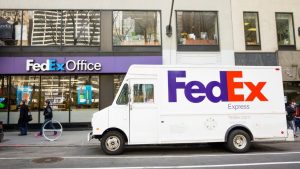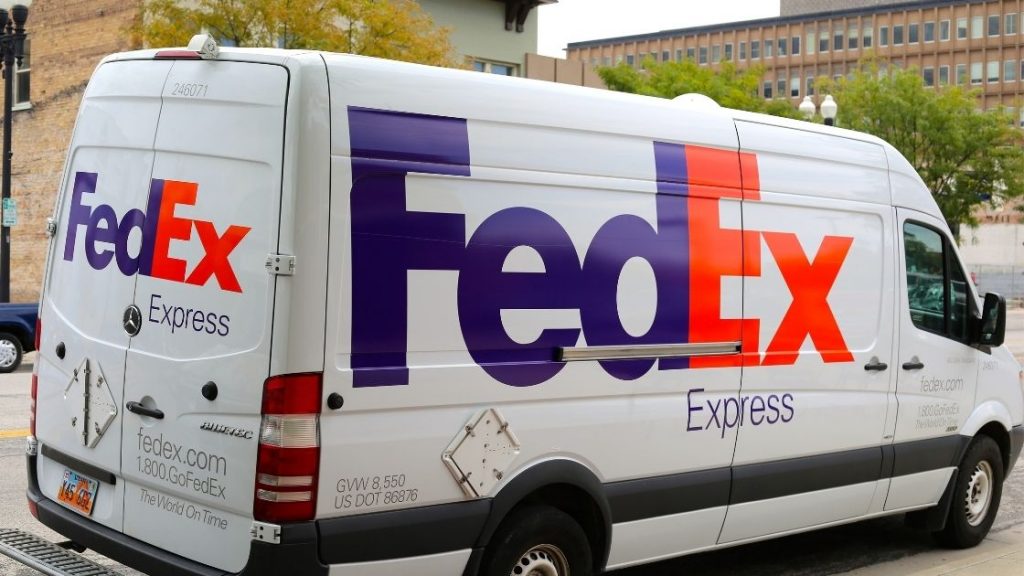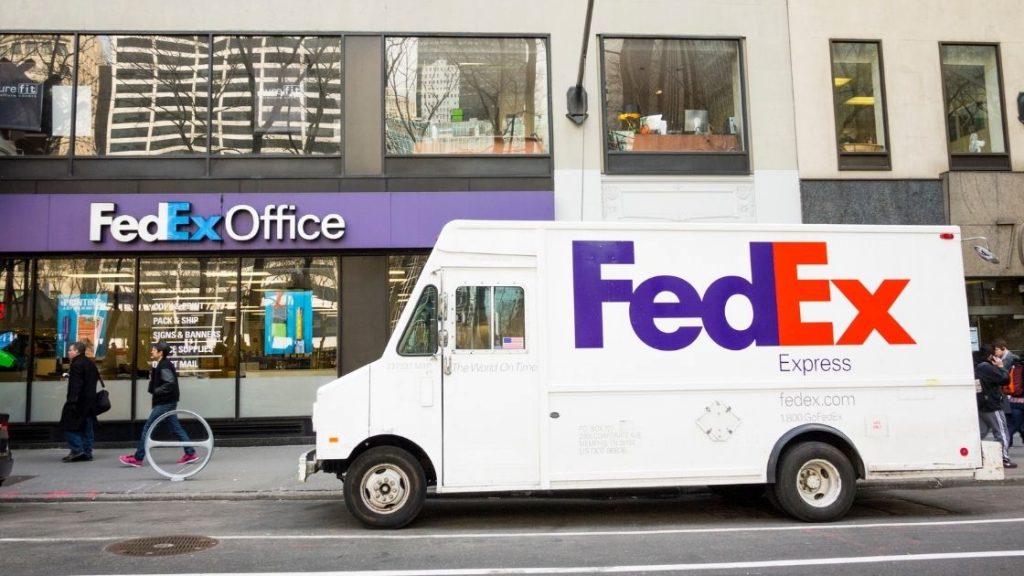Interested in learning how you can make passive income by investing in trucks?
Sounds a bit odd, I know, but there are some great ways to do this (and the ROIs can be impressive).
In this article, we will discuss 3 strategies that you can use to generate passive income through truck investing.
We will go into each of these strategies in more detail, but here’s a preview of what we’ll cover:
Getting a Truck and Leasing (or Renting) it Out
Investing in a FedEx Delivery Route
Let’s get into it!
This post may contain affiliate links. If you click on a link and complete a transaction, I may make a small commission at no extra cost to you.
The information contained in this post is for informational purposes only. It is not a recommendation to buy or invest, and it is not financial, investment, legal, or tax advice. You should seek the advice of a qualified professional before making any investment or other decisions relating to the topics covered by this article.
Getting a Truck and Leasing (or Renting) It Out
The first strategy is straightforward. You buy a semi-truck and lease it out or rent it out.
When I talk about leasing out you truck, I am really referring to “leasing on” to a carrier and fulfilling loads for them. Now, you are not going to be doing the driving for these loads, which is why they are fairly passive.
In case you don’t know, a carrier is just a trucking company that has the appropriate licenses and authority. Some carriers are wiling to lease on a truck when they need it and will also allow the truck owner to hire a driver to run the actual load (which is trucker lingo for a single freight shipment).
Now renting out your truck is different. That’s when you literally rent it out to someone, just like a car rental service. As you can imagine, this strategy is far more passive.
We’ll cover both strategies below. Let’s get started.
Getting Your Truck
The first step is getting your truck. I imagine that cost is at the top of your mind, so let’s tackle that first.
How Much Does a Semi-Truck Cost?
A new semi-truck can cost between $130,000 to $200,000 while a used semi-truck can be purchased for as low as $30,000 (but even used trucks can be priced as high as $180,000, depending on the year, make and model). Source
How much money can I make investing in a truck?
You can make approximately $750 to $1,500 per week leasing out your truck, but after accounting for common expenses like driver wages, gas, trailer rentals, insurance, tolls, etc., your net earnings may be around $1,000 per week. Source
How Can I Buy a Truck?
As we discussed earlier, trucks can cost a lot of money.
Fortunately, financing is readily available for semi-trucks if you qualify. You can go to large money center banks like Bank of America, Wells Fargo or US Bank. They will usually have good rates and terms, but will also insist on strict requirements (they want solid credit, good financials and don’t like inexperienced start-ups).
As an alternative, you may want to look at specialty financing companies operating in this space.
You can start by checking out companies like CAG Truck Capital, First Capital Business Finance (they may be more receptive to start-ups) and Selectrucks (they offer financing on used trucks).
Can I Lease A Truck?
You can lease a semi-truck. Like with most leases, the lessor will still evaluate your creditworthiness and other factors, but your starting costs can be far less than buying a truck. There are also “lease-to-own” options if you don’t have the money now to buy your truck but ultimately want to own one.
Should I Buy or Lease My Truck?
Buying a semi-truck can cost more initially, but may be more profitable over the long run because you won’t have lease payments eating into your profits. Plus, it’s always nice to own an asset and be able to sell it in a pinch if needed.
If you don’t have the money to purchase a truck outright or cannot secure financing for a truck, leasing can be a fine option to get you started in the trucking business. Leasing can also allow you to scale faster (since you don’t need as much to acquire your next truck).
Plus, leasing can save you money when you are starting out, so you can more easily cover the cost of repairs and maintenance on your truck when they happen (which can be significant).
What Type of Truck and Trailer Should You Get?
You should get a truck and trailer that align with your budget, as well as your strategy.
Here are some key factors you need to consider when deciding what truck you want to buy.
New or Used: This is always an important question when buying any type of vehicle, but even more so when buying a truck that is going to see heavy use.
A new truck will obviously have a longer shelf life and fewer repairs at the outset, but you will pay for it. A used truck can be substantially cheaper, but you will need to make sure that the mileage is not too excessive and the truck is in reasonably good condition.
You should hire a qualified mechanic to go with you when checking out a used truck for sale so they can tell you the “real” condition of the truck.
Day Cab or Sleeper: Day cabs will be cheaper than sleepers because they don’t have the extra features that allow a driver to sleep in the truck. But a sleeper will offer far more versatility on how you can use your truck because it can be used for local deliveries or for “over the road” transport (this is just trucking jargon for hauls lasting a long time over long distances).
If you want to learn more about sleeper cabs, check out my article on the topic, which covers all of the key info you need to know.
Selecting a Truck Brand: There are several major truck brands that you can consider. They include the following:
- Freightliner
- International
- Kenworth
- Mack
- Peterbilt
- Volvo
Different brands focus on different things, but one important thing to note is that when paying for repairs or maintenance, parts for certain brands may cost more or be harder to find.
In general, Freightliner seems to have easy access to parts and be more affordable. Peterbilt and Volvo, while great brands, can have higher expenses in this area.
If you want to learn more about the different truck brands, check out this article by Owner Operator Land.
Getting Your Trailer

As for trailers, there are three main types: (i) reefers (refrigerated units); (ii) day vans (the most common trailers – just big rectangular boxes with doors in the back; and (iii) flatbeds (which have no doors or enclosures).
As mentioned earlier, you should get the type of trailer that you will need based on the sort of routes you want to run. Of course, you can hold off on buying one and rent it out when needed.
That sparks an idea.
You can buy just the trailers and rent them out. Sounds like a super passive way to make money in the trucking business without the hassle of dealing with trucks breaking down or needing maintenance, drivers quitting, etc.
You can get a simple flatbed trailer for between $10,000 to $20,000 based on listings I saw on mylittlesalesman.com and rent them out on sites like Rentalyard.com for around $900 per month.
Another great way to generate extra passive income from your truck is outfitting it to have billboards on the sides.
You can rent out those mobile billboards to companies who want to advertise their business while your trucks are doing their routes. Hey, your trucks have to run their loads anyway – why not make some extra money while they’re at it?
If you want to learn more, check out my article on how to start a mobile billboard business.
Leasing Your Truck Onto a Carrier
Now that you have your truck, you need to lease it on to a carrier.
This makes your investment fairly passive because the carrier handles a lot of the administrative hassles associated with operating a trucking business.
To lease on to a carrier, you don’t need you own operating authority, which can be a hassle. However, if you have your own authority and provide your own insurance, the carrier may be willing to give you a larger cut.
If you lease on to a carrier, they will often:
- Handle most of the paperwork
- Handle fuel tax
- Find freight for you and provides dispatching services
- Arrange insurance
- Often provide maintenance at their shop
In some cases, the carrier may also provide drivers when you lease your truck to them, but if not, you will need to have drivers in place.
There are a host of companies that will lease your truck from you. You may need to apply as an owner-operator for some of them, but a good number will allow you to lease your truck and have someone else drive.
You can start your search by checking out the following:
Getting Your Drivers
Speaking of drivers, finding and retaining drivers is going to be an important part of this enterprise.
Finding good drivers will not be easy. Of course you can post “driver wanted” listings and screen potential applicants. You can also scour job boards and try to get good referral candidates through word of mouth, etc., but you won’t really know if they are good until you have tried them out.
In addition, the turnover for drivers is very high.
So it may be a challenge to find good, reliable, long-term drivers. You can try to mitigate the risk of your drivers leaving by treating them well (paying a fair market wage and offering incentives for them to stay on).
But to cover your bases, you should build up a stable of solid drivers that you can call on to help reduce the impact of any single driver leaving.
Bottom line: Investing in trucks and leasing them out can be a great way to make mostly passive income, but it will not be completely passive. While you may enjoy a high ROI using this strategy, it will come with some logistical and administrative obligations.
Related Reading:
Box Trucks: If you want to start operating a trucking business that doesn’t require operating a semi (so doesn’t need a CDL) and services local areas, you may want to look into a box truck business. These are basically smaller trucks that can maneuver through urban centers but can still haul a decent amount of freight (think U-Hauls).
This type of business can be far less risky and it’s much easier to get started. For a complete guide on how to get started, check out my article on how to start a box truck business.
Dump Trucks: One of my favorite trucking options (and one that doesn’t require long hauls) is operating a dump truck business. You can operate locally and sell your drivers on the very attractive perk of coming home every night. If you want a start-to-finish guide on how to start your own dump truck business, check out my beginner’s guide to starting a dump truck business.
How to Make Passive Income By Renting Out Your Truck
So far, we have focused on leasing on to carrier, but let’s touch on the rental strategy I mentioned at the top of the article.
You can simply rent out your semi-truck through various platforms. The most popular are probably coop.com and rentalyard.com. By buying trucks and renting them out fulltime, you can create a pretty sweet passive income business.
It’s also a far simpler model because you don’t really have to worry about drivers, licensing, and all the rest. They key is to get the right trucks for your market, buy them on favorable terms, and rent them out through these platforms at a profit.
If this strategy sounds interesting to you, check out my full article on the topic here.
Investing in a FedEx Delivery Route

Another way to invest in the trucking business and generate passive income is by buying FedEx routes.
The concept is fairly simple. You buy a FedEx route that covers a given territory. You will then have the right to make deliveries to locations within the territory. Your managers and drivers will handle the day-to-day delivery obligations and you will get paid on each delivery made.
In many cases, you don’t have to worry about buying your trucks because the FedEx routes for sale usually come with the trucks as part of the package.
There are two types of FedEx routes you can purchase: (i) FedEx Ground Pick-Up & Delivery (P&D) routes, which are basically local deliveries using vans or box trucks, and (ii) FedEx linehaul routes, which are much longer routes using semi-trucks.
The great thing about P&D routes is that FedEx provides a steady flow of deliveries each day, so you never have to worry about where the next job is going to come from. Your only real responsibility is making sure the deliveries happen on time, every time.
Another advantage of FedEx P&D routes is that you can operate this business using vans or box trucks instead of semi-trucks, which can be less complicated and expensive.
That being said, FedEx Linehaul routes can be more profitable. Here’s a chart showing the profit you can expect to make for each type of route.
|
Type of FedEx Route |
Profitability |
|
FedEx Ground P&D Route |
10%-25% of gross revenue |
|
FedEx Linehaul Route (solo runs) |
20%-30% of gross revenue |
|
FedEx Linehaul Route (team runs) |
40%-45% of gross revenue |
Source: Route Consultant
According to FedEx, the average revenue for a FedEx route owner is $1.5 million. That figure represents the entire revenue for all routes owned by a single business owner (most owners own multiple routes) but does not reflect deductions for operating costs.
To determine profitability, you will need to deduct expenses from revenue.
The annual profit per route is between $30,000-$40,000 with the average cost per route being $100,000 according to Buyersmarketinc. That’s an awesome average ROI of between 30%-40%.
It is important to note that there are requirements you need to follow if you want to operate these routes, including specific FedEx ISP requirements.
I have put together a chart that summarizes them:
|
General Requirement |
Description |
|
Must be a non-profit corporation |
No LLCs, LLPs, sole proprietorships, partnerships or limited partnerships allowed |
|
Must employ all personnel |
Must have responsibility for the following: · Employer-related expenses · Payroll deductions · Training personnel · Ensuring employees are legally allowed to work in US |
|
Must follow agreement terms |
General contractual obligations include:
· Maintain a safety and compliance program · Corporation in good standing · Service reliability · Vehicle maintenance · Maintain image of FedEx · Remain committed to FedEx business |
|
Must comply with route requirements |
ISP Agreement requires: · Minimum ownership of 5 routes or 500 stops per day · Cannot hold more than 15% of routes in a given termination (subject to certain exceptions) · Must provide both business and home deliveries within territory |
Sources: FedEx and KR Capital
If you want to learn more about buying FedEx routes, check out my step-by-step guide to buying a FedEx route).
Buying a Bread Route

If you want a way to invest in trucking with even fewer complications, you can purchase a bread route. Somewhat similar in concept to a FedEx route, you can buy bread routes that cover a designated territory.
You basically make money off every loaf of bread that you sell to supermarkets and retailers in your territory.
I am talking about selling well-known brands like Wonder, Nature’s Own, Pepperidge Farm and Sara Lee to major retailers like Walmart and Target. And to top it off, many of these distributorship arrangements are exclusive, so if the supermarket in your area wants to carry your brand of bread, they must buy through you.
Most bread routes are stable and established businesses and can provide reliable income from day one.
How much of a return on investment can you expect from a bread route?
Check out the ROI column on this chart I put together. I found these listings on Routeforsale.net using Arnold & Bimbo Bread as the filter. There are a bunch of other places where they sell bread routes (and for different brands), but I just selected this one because it had a large selection of routes.
|
Description of Bread Route |
Price |
Cash Flow |
ROI |
|
Arnold & Bimbo Bread – Blythe, CA |
$104,000 |
$58,552 |
56.3% |
|
Arnold & Bimbo Bread – New London County, CT |
$115,000 |
$71,330 |
62.0% |
|
Arnold & Bimbo Bread – Sebring, FL |
$220,000 |
$90,222 |
41.0% |
|
Arnold & Bimbo Bread – Daytona Beach, FL |
$177,000 |
$78,992 |
44.6% |
|
Arnold & Bimbo Bread – Atlanta, GA |
$200,000 |
$74,908 |
37.4% |
|
Arnold & Bimbo Bread – Dalton, GA |
$131,500 |
$66,971 |
50.9% |
|
Arnold & Bimbo Bread – Buford, GA |
$299,000 |
$129,011 |
43,1% |
|
Arnold & Bimbo Bread – Perry GA |
$199,000 |
$74,308 |
37.3% |
|
Arnold & Bimbo Bread – Coffee County, GA |
$209,000 |
$120,796 |
57.7% |
|
Arnold & Bimbo Bread – Gilmer County, GA |
$120,000 |
$59,488 |
49.5% |
The average ROI for these bread routes is a whopping 46.0%! Now, you should temper your expectations here because most of these routes are likely operated by the owner.
If you want a more passive income source, you will have to hire drivers to run the routes. Of course, in that case, the ROIs will go down, but you should still have a lot of room to play with.
Want to learn more about bread routes? Check out my beginner’s guide to buying a bread route.
Conclusion
So there you have it: three great ways to make passive (or at least mostly passive) income through truck investing.
Hope this has been useful in helping you find a truck investment that’s right for you.
If you want to learn about more great trucking businesses ideas, check out my article on the best trucking businesses to start [we cover 20+ ideas that you can explore].
If passive income is your focus, check out two of my favorite articles on the topic:
My article on businesses that run themselves, where I cover some great businesses that can generate attractive levels of return without a lot of day to day involvement by the owner.
My ultimate beginner’s guide to passive income [25+ strategies that work], where I cover tons of effective strategies that generate passive income.

